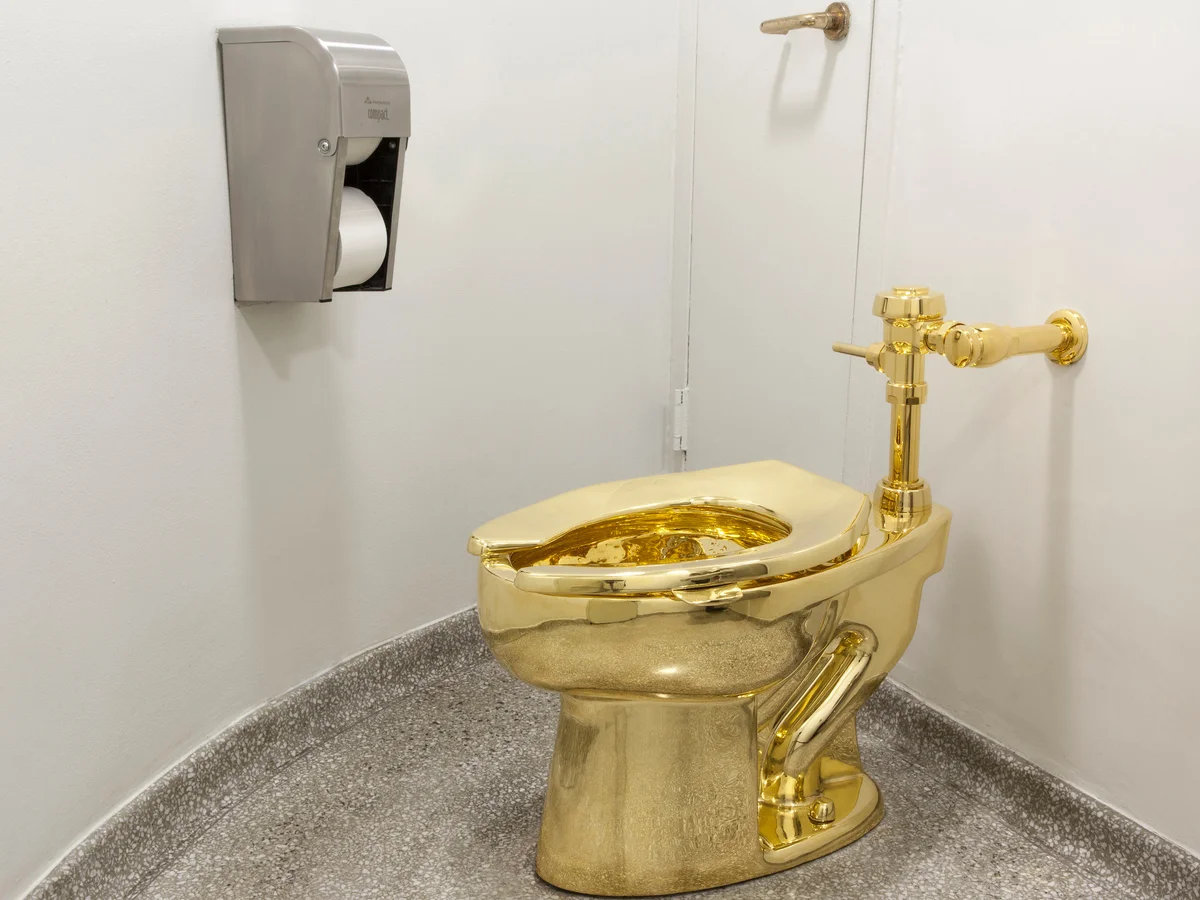Ripley's Believe It or Not just made headlines again with a purchase that blends absurdity and strategy in equal measure. The entertainment giant snapped up Maurizio Cattelan's infamous solid-gold toilet, titled America, for $12.1 million at a Sotheby's auction yesterday. This isn't some idle whim from a company known for oddball collections. Crafted from over 100 kilograms of 18-karat gold, the fully functional sculpture weighs in at around 223 pounds and carries a melt value close to $10 million based on current gold prices. For Ripley's, this move screams calculated boldness amid today's choppy markets.
The auction wrapped up with just one bid after starting at $10 million, underscoring the piece's niche appeal yet undeniable draw. Owned previously by hedge fund billionaire Steve Cohen since 2017, America joins Ripley's vaults as the sole surviving edition of its kind. The other version vanished in a brazen 2019 heist from England's Blenheim Palace, leaving this one as a singular trophy in the art world. Ripley's excitement bubbled over in their statement, calling it the "shiniest exhibit ever" and hinting at future displays that could let fans take the ultimate seat, with plenty of safeguards in place.

Ripley’s Believe It or Not! — the entertainment company known for oddities and attractions — made headlines by purchasing Maurizio Cattelan’s $12.1 million gold toilet.
A Throne Steeped in Scandal and Spectacle
Cattelan's creation first stunned visitors at New York's Guggenheim Museum back in 2016, where lines formed for the privilege of using it during a four-month run. Over 100,000 people waited their turn, turning a provocative commentary on wealth into a cultural phenomenon. The artist meant it as satire, forcing the elite to confront excess through something as everyday as a bathroom break. Fast forward to 2019, and the drama escalated when thieves smashed their way into Blenheim Palace and made off with the duplicate, estimated then at $5.9 million in gold alone.
That theft cemented America's legend, blending high art with heist-movie flair. Now, with gold prices surging amid global uncertainties, Sotheby's cleverly pegged the reserve to the metal's spot value, drawing in buyers who saw beyond the flush. Ripley's acquisition feels timely, especially as collectors hunt for assets that marry cultural cachet with tangible security. The company's global museums, from Orlando to London, stand to gain from this infusion of buzz, pulling in crowds eager for the unbelievable.
Why Shell Out $12.1 Million? The Layers of Value Unpacked
Surface level, the price tag raises eyebrows, exceeding the gold's raw worth by more than $2 million. Yet dig deeper, and Ripley's logic sharpens into focus. That premium covers not just artistry but provenance, the artwork's documented journey from museum darling to auction star. For a brand built on the extraordinary, this toilet amplifies their identity like nothing else could. Imagine the social media storm, the viral selfies, the packed ticket lines it will spark across their 30-plus attractions worldwide.
Beyond flash, the purchase doubles as marketing rocket fuel. Ripley's hinted at interactive exhibits, turning passive viewing into participatory wonder, all while safeguarding the piece under tight security. According to analysis reviewed by Finance Monthly, such high-profile acquisitions often yield outsized returns through heightened visibility. One expert in the field put it bluntly: installations like this can boost attendance by 15 to 20 percent in the first year alone, based on patterns from similar oddity-driven venues. The emotional pull hits hard too, evoking that childlike awe at something so gloriously over-the-top, reminding us why we chase the weird in a world gone predictable.

The first edition of Cattelan’s America at Blenheim Palace, famously stolen in a 2019 heist, highlighting the artwork’s dramatic history and enduring value.
The Hidden Financial Edge: Art Meets Gold in a Perfect Business Hedge
What elevates this from quirky splurge to savvy strategy lies in its role as an alternative investment, a category savvy businesses use to shield against stock market jitters. Alternative investments include things like real estate or commodities that don't dance to the same tune as bonds or equities, offering stability when traditional portfolios wobble. For Ripley's, America packs a double punch: it's provocative art with proven draw, backed by gold's enduring shine as an inflation fighter.
Art market analyst Giovana Edid explains it clearly in recent commentary: art often moves independently of broader markets, acting as a hedge that cuts overall risk during downturns. This means when stocks dip, blue-chip pieces like Cattelan's hold steady or even climb, diversifying a company's assets beyond cash flow alone. Consider the numbers, blue-chip art outperformed the FTSE 100 index by 200 percent from 2000 to 2023, per Deloitte's Art & Finance report, proving its long-game strength even as economies stutter.
Ripley's twist adds business depth, blending the toilet's $10 million melt floor with upside from Cattelan's rising star, whose works have fetched up to $17 million at auction. In volatile 2025, with gold up 25 percent year-to-date amid geopolitical tensions, this setup provides emotional reassurance too, a gleaming symbol of resilience. It's not mere luxury, it's forward-thinking finance wrapped in satire, ensuring Ripley's stays flush with opportunities no matter the economic weather.
This golden gamble captures the thrill of risk tempered by smarts, a testament to how even the most outlandish buys can secure a brighter tomorrow. Ripley's didn't just claim a throne, they forged a legacy that flushes doubt down the drain, inviting us all to ponder value in its most glittering form.














